Pietro Vannucci, the artist always known as Perugino, after Perugia, the chief city of his native Umbria, was born c. 1450. A superb new exhibition, which celebrates the 500th anniversary of his death in 1523, is currently on show at the Galleria Nazionale dell’Umbria.
It was probably in Umbria that Perugino’s apprenticeship began and the exhibition begins with that background, with works by Benedetto Bonfigli (d. 1496) and Bartolomeo Caporali (d. before 1505), then considered the best artists of the Umbrian school. However, it was in Florence that Perugino reached his artistic maturity, in the workshop of Verrocchio—whose members included Botticelli and Leonardo. Looking at examples of the art of Verrocchio, Ghirlandaio and the Florentines, of which this show has several examples, it is clear how Perugino’s pictorial imagination was shaped. Altarpiece after altarpiece is populated with colourfully clad characters of somewhat ambiguous gender, standing in sinuous contrapposto, eyes rolling almost epileptically heavenwards.
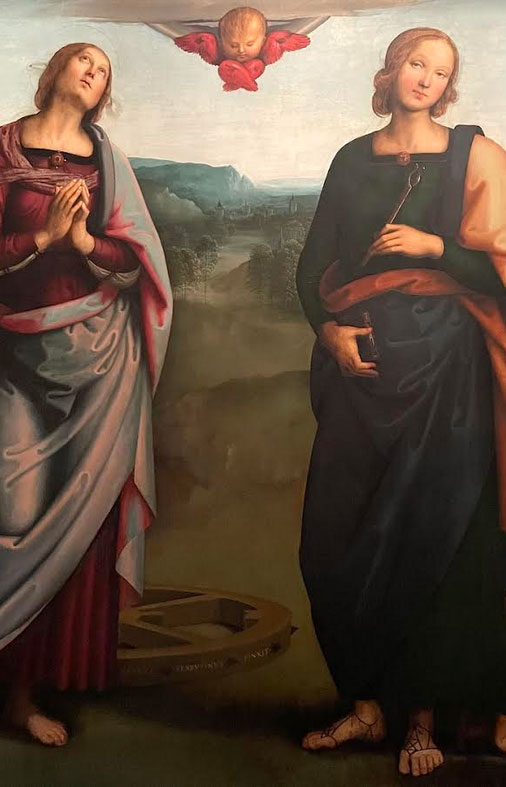
Perugino’s reputation was made when, together with a group of Florentine painters, he was called to Rome in 1481 to produce works for St Peter’s and the Sistine Chapel. As a result, some of the finest connoisseurs of the age, among them Lorenzo the Magnificent and Isabella d’Este, sought his services. He was described as “Italy’s finest maestro”; the colours of his palette were acknowledged to possess a special “sweetness”—a quality he is thought to have learned to convey from time spent in the lagoon light of Venice in the mid-1490s. The quality of his palette seems to suggest an everlasting sunny springtime.
Perugino, in his heyday, was formidable and prolific and maintained a large workshop. His self-portraits reveal a man of stocky, thickset appearance, probably capable of driving a hard bargain. He had no interest whatsoever in God, Vasari tells us, and an obsessive compulsion to make money. The star exhibit in this show is his Marriage of the Virgin, painted for the cathedral of Perugia in 1504. It hung there, in the Chapel of the Holy Ring, until 1797 when it was stolen by Napoleon. It is still in France, in Caen, but has returned to Umbria for this show. It contains many of the elements for which Perugino is distinctive: the serene and idealised backdrop; the rolling eyeballs; the outlandish headdresses; the rich colour blocks provided by the protagonists’ robes; the acute portrait studies in some of the faces.
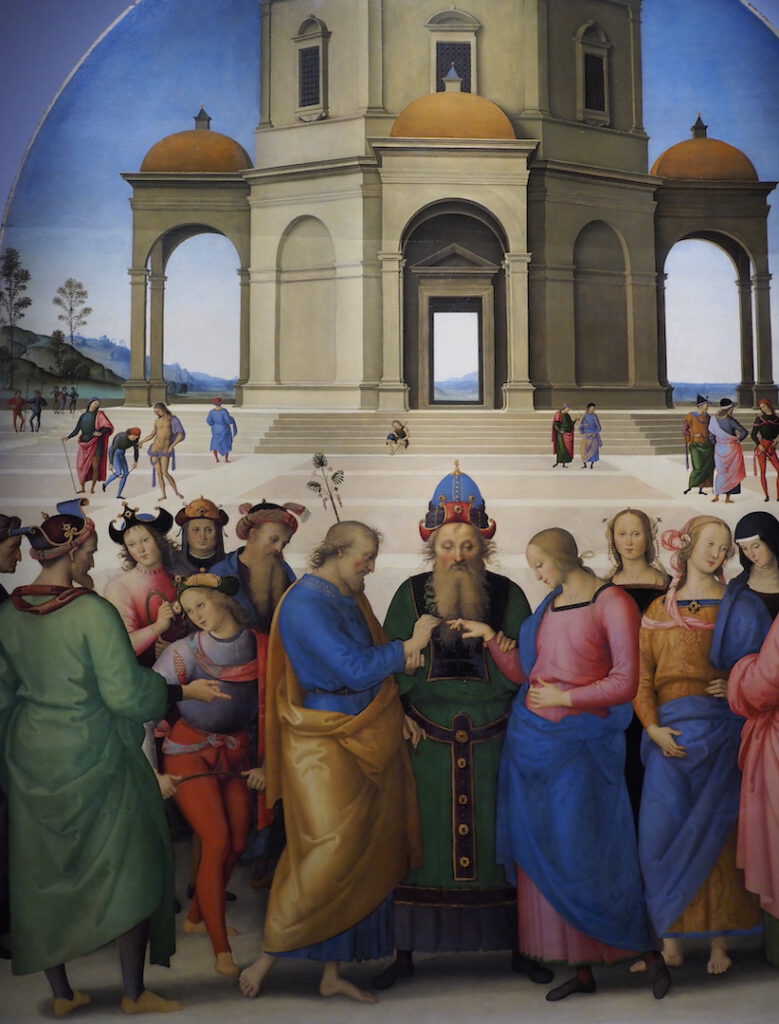
But Perugino often overstretched himself. “Pietro always had so much to do,” Vasari tells us, “that he frequently repeated himself, and his theory of art led him so far that all his figures have the same air.” It is true. There are undeniable similarities between his Holy Ring and the Christ Giving the Keys to St Peter, which he had painted for the Sistine Chapel in 1481–2. The Renaissance building in the centre, the enigmatic figures in the middle ground, the crowd at the front, the mountainous backdrop, the heavily stylised trees, the mixture of idealised, androgynous faces and contemporary portraits from life. It was the formula which had made him famous and he saw no reason to diverge from the tried and tested path. All of its elements can be found again in his Marriage of the Virgin.
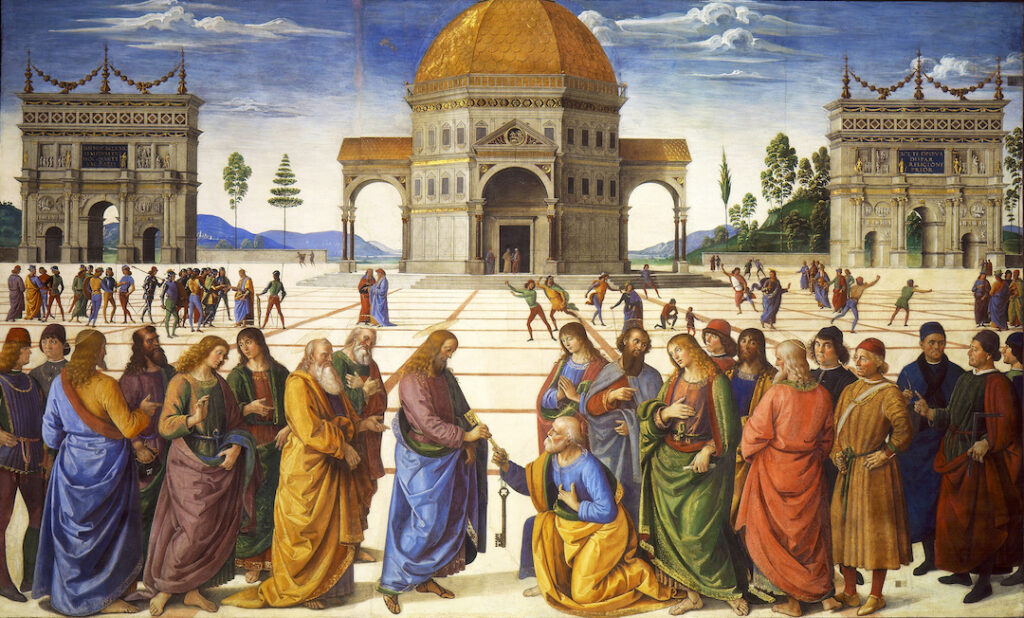
Perugino, at his height, was very influential. The Marriage of the Virgin painted in the same year by Raphael is nothing short of a downright copy (though Raphael places his signature very prominently on the central building).
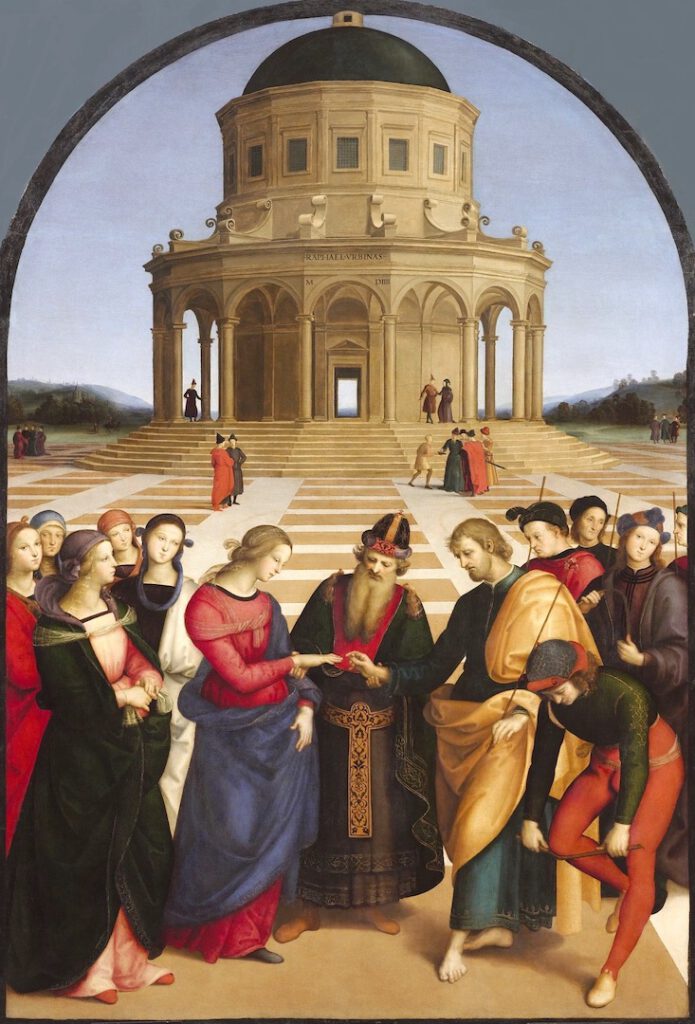
Raphael—Perugino’s greatest pupil— went on to far surpass his master, even though he predeceased him. Perugino, on the other hand, remained a painter of the 15th century, and as the 16th century wore on and revolutionary younger artists began to break the old moulds, he found that he could no longer get away with recycling past successes. Vasari tells a story about an altarpiece for the Annunziata in Florence, completed by Perugino after the death of Filippino Lippi. “But when this work was uncovered it was severely criticised by all the new artists, chiefly because Pietro had employed figures of which he had already made use. Even his friends declared but he had not taken pains, but had abandoned the good method of working, either from avarice or in order to save time. Pietro answered, ‘I have done the figures which you have formerly praised and which have given you great pleasure. If you are now dissatisfied and do not praise them, how can I help it?’” This was 1507, four years after Leonardo had painted his Mona Lisa and three since Michelangelo had sculpted his David. Perugino could not cling on forever to his spot at the top of Fortune’s wheel.
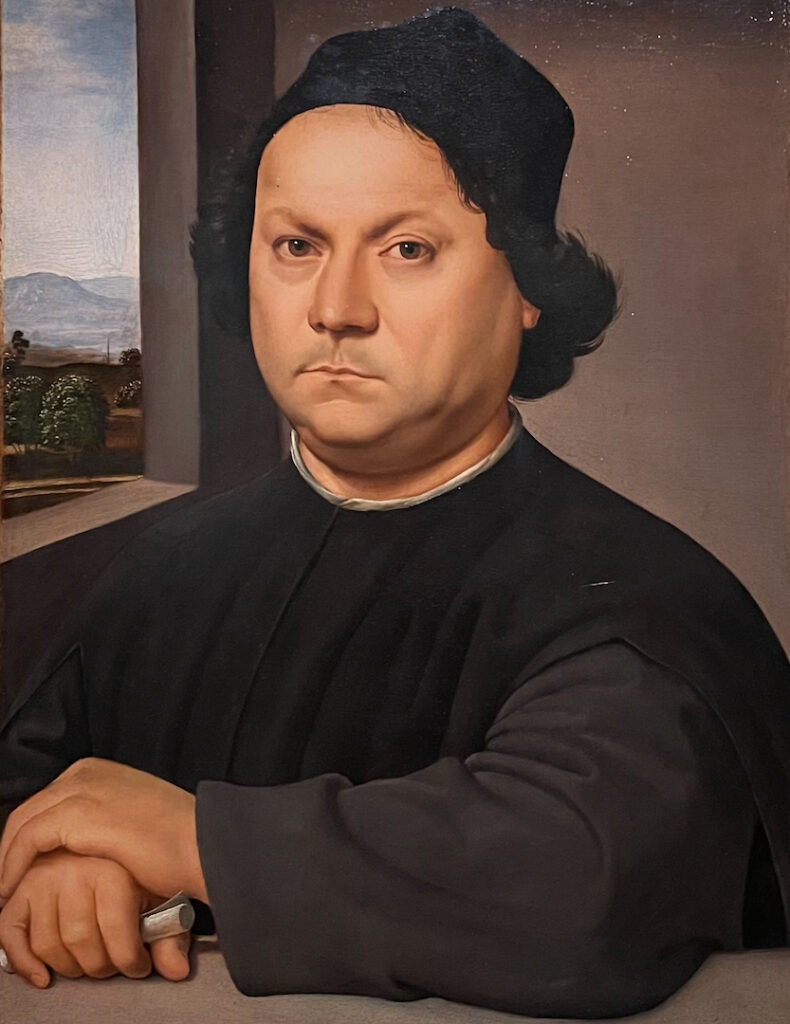
This show is clever, though, in that it ends on a high note. One skill that Perugino had that perhaps neither Michelangelo nor Raphael could ever equal was his gift at taking a keen and vivid likeness. In one of the last rooms of the exhibition are displayed a number of his portraits, many of them from the Uffizi. His own self-portrait is among them and there is something about the face that is instantly knowable. You feel you’ve seen this man. He might be the municipal carpark attendant or the man behind the fish counter in the supermarket. The waiter at the corner café. The man who came to fix the boiler. Back in Renaissance central Italy, he was the painter of softly serene altarpieces who didn’t believe in God.
Italy’s Best Maestro: Perugino and his Day, curated by Marco Pierini and Veruska Picchiarelli, runs until 11th June at the Galleria Nazionale dell’Umbria, Perugia.






